Maine, often called the “Lighthouse State,” is home to 65 lighthouses, each with its unique history and stunning views. Whether you're a maritime enthusiast or love coastal views, the best Maine lighthouses featured here are must-see attractions.
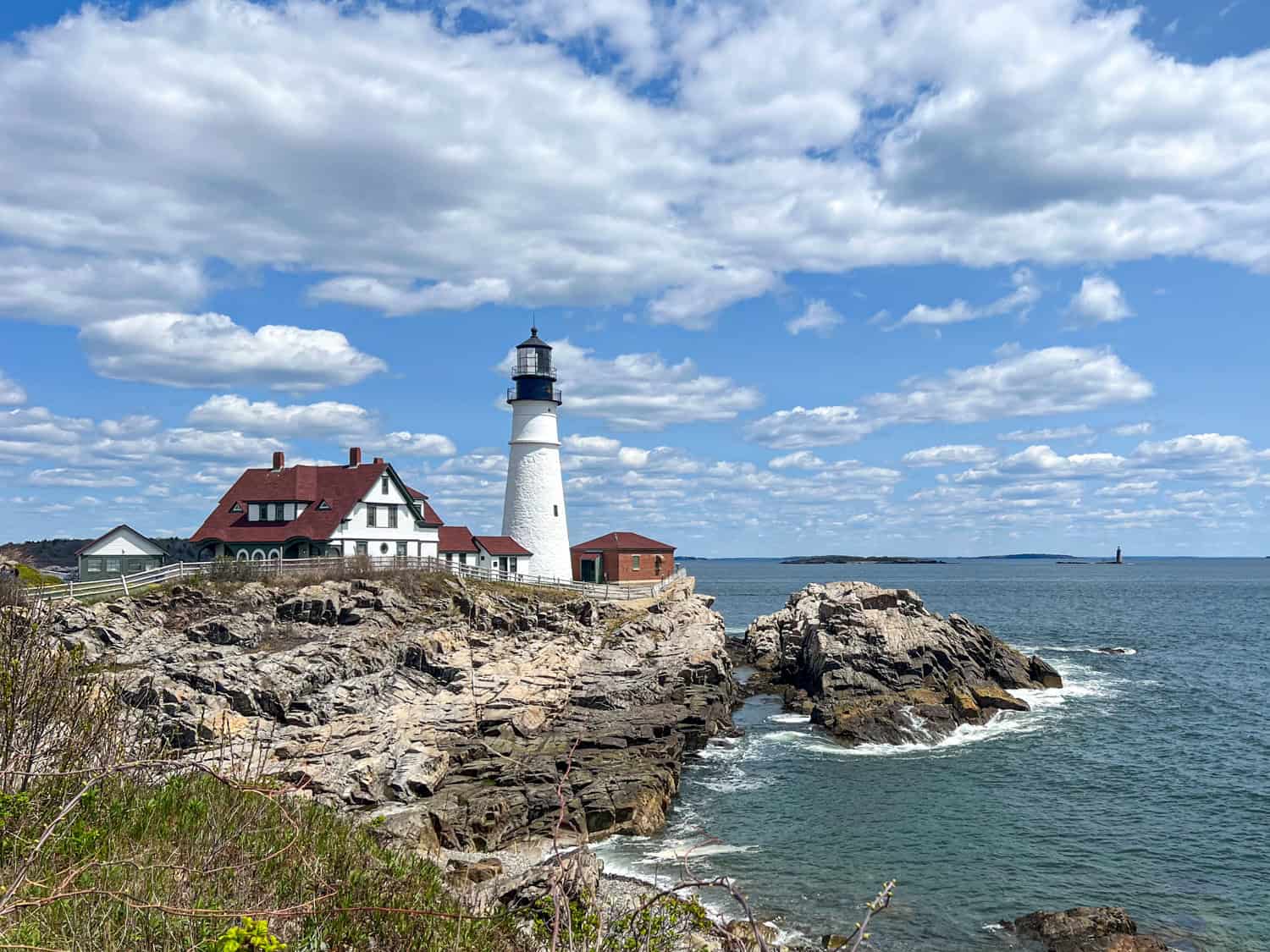
The lighthouses still standing today are spread out over 5,000 miles of Maine's coast and nearby islands.
My girlfriend Kel and I collaborated on this article together, based on her visits to Maine and two of my own in 2023.
I've grouped our Maine lighthouse recommendations according to geographic location, beginning with the most photographed lighthouse in Portland and working outward from there.
In a few instances, we timed our visits to take advantage of nearby lobster shacks. I'll mention those, too. Now, let's dive in and discover some of the best lighthouses in Maine!
Table of Contents
- Most Scenic Lighthouses
- 1. Portland Head Light
- 2. Bug Light
- 3. Spring Point Ledge Lighthouse
- 4. Cape Elizabeth Light East Tower
- 5. Pemaquid Point Lighthouse
- 6. Egg Rock Lighthouse
- 7. Bass Harbor Head Light Station
- 8. Rockland Breakwater Lighthouse
- 9. Owl's Head Lighthouse
- 10. Nubble Lighthouse
- 11. West Quoddy Head Lighthouse
- 12. Doubling Point Lighthouse
- 13. Marshall Point Lighthouse
- 14. Burnt Island Light House
- 15. Goat Island Light
- Conclusion
Most Scenic Lighthouses
1. Portland Head Light
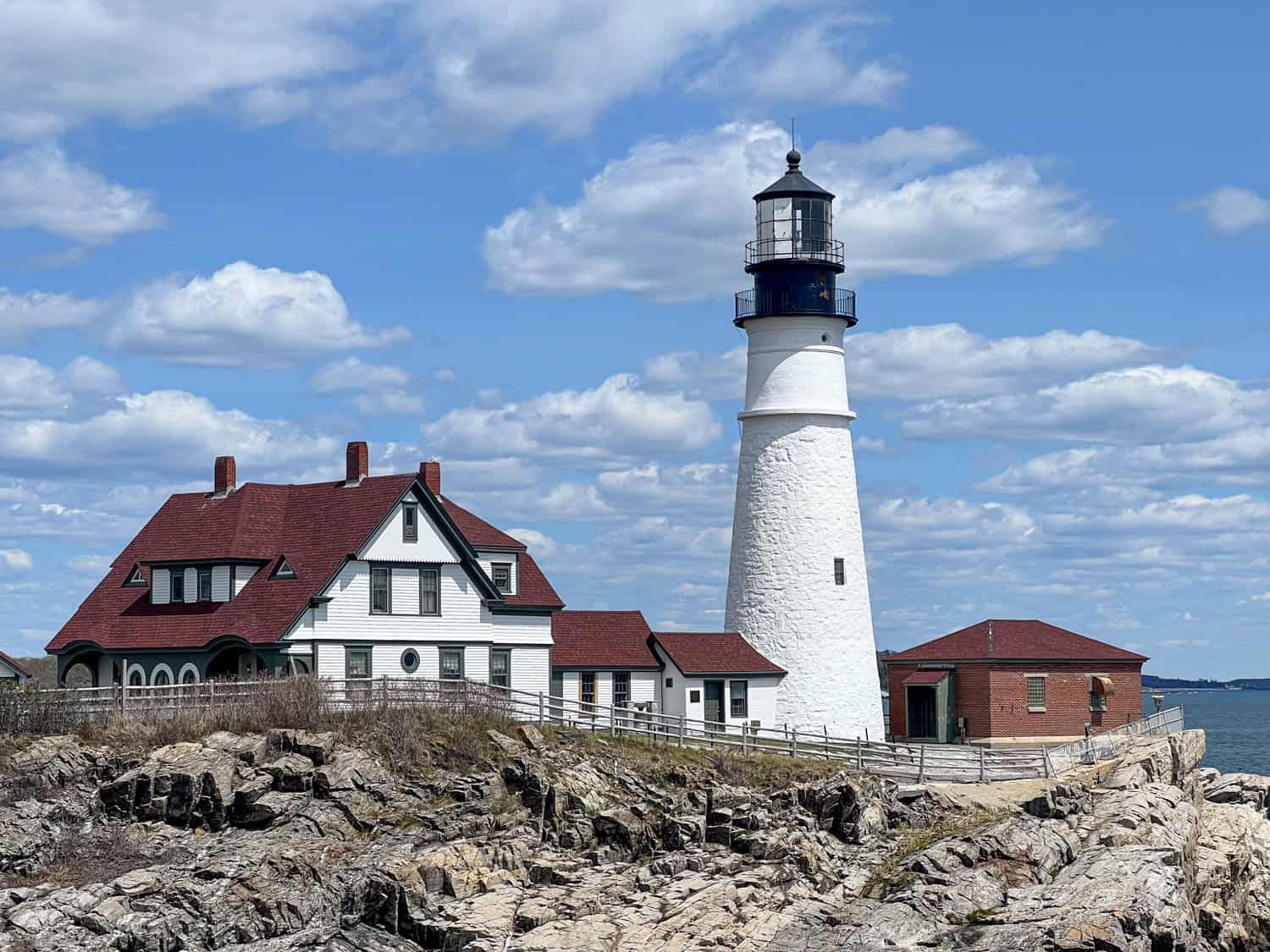
Portland Head Light is an iconic lighthouse that is a must-see if you're exploring the coast of Maine.
Situated in Cape Elizabeth, a 15-minute drive south of downtown Portland, it was first lit in 1791, making it the oldest lighthouse in the state.
Commissioned by President George Washington, it has stood as a beacon for mariners navigating the dangerous waters of the Atlantic Ocean for more than 230 years.
The lighthouse has undergone several modifications, including adding a Victorian keeper's house in 1891, which now serves as a museum.
During both World Wars, Portland Head Light played a crucial role in coastal defense. Its powerful light and foghorn have guided countless ships safely to shore, and it remains an active aid to navigation today.
The surrounding Fort Williams Park offers spectacular views and is a popular spot for picnics, hiking, and photography.
I recommend timing your visit with the operating hours of Bite Into Maine, a food truck offering some of the best lobster rolls in the state.
With its rich history and breathtaking scenery, Portland Head Light isn't just a lighthouse; it's a symbol of Maine's maritime heritage.
2. Bug Light
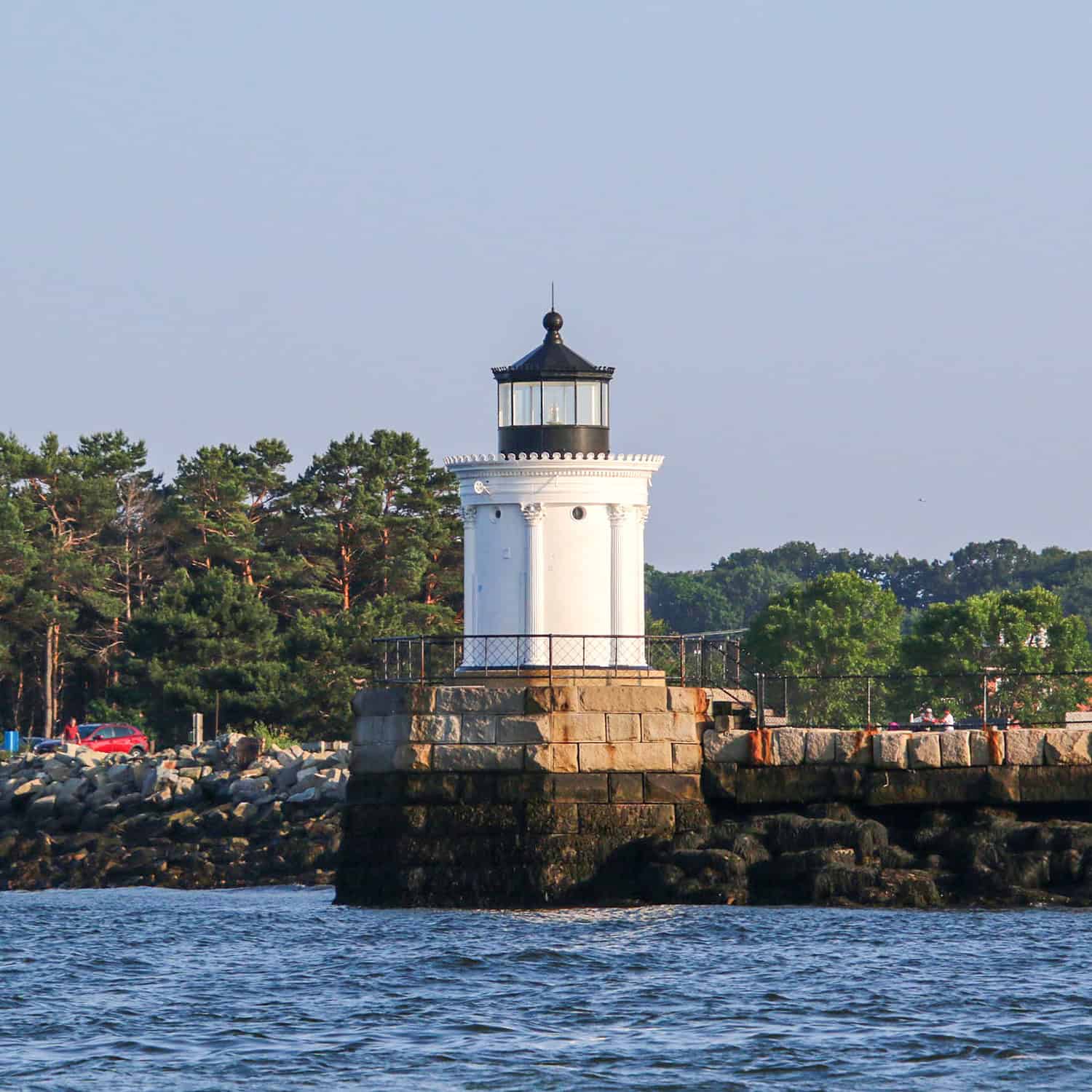
The Portland Breakwater Lighthouse, also known as Bug Light, is another scenic spot.
Located in South Portland, it overlooks Portland Harbor and was initially built in 1855. The current structure, completed in 1875, was inspired by an ancient Greek monument.
It's one of the smaller lighthouses you'll find in Maine, which is how it got its nickname.
Historically, Bug Light played a vital role during World War II as a navigational guide for ships involved in shipbuilding and troop transport.
The lighthouse marked the entrance to a shipyard where Liberty Ships were assembled. These ships were essential for transporting goods and troops overseas.
Approximately 30,000 people worked at the shipyard where Bug Light Park exists today.
The 8-acre park offers a peaceful setting for visitors to enjoy panoramic views of Portland Harbor and the city skyline. A Liberty Ship Memorial commemorates the work of the WWII shipbuilders.
We passed Bug Light on a sunset lobster boat cruise to Peaks Island. I want to visit the park the next time I'm in Portland.
3. Spring Point Ledge Lighthouse
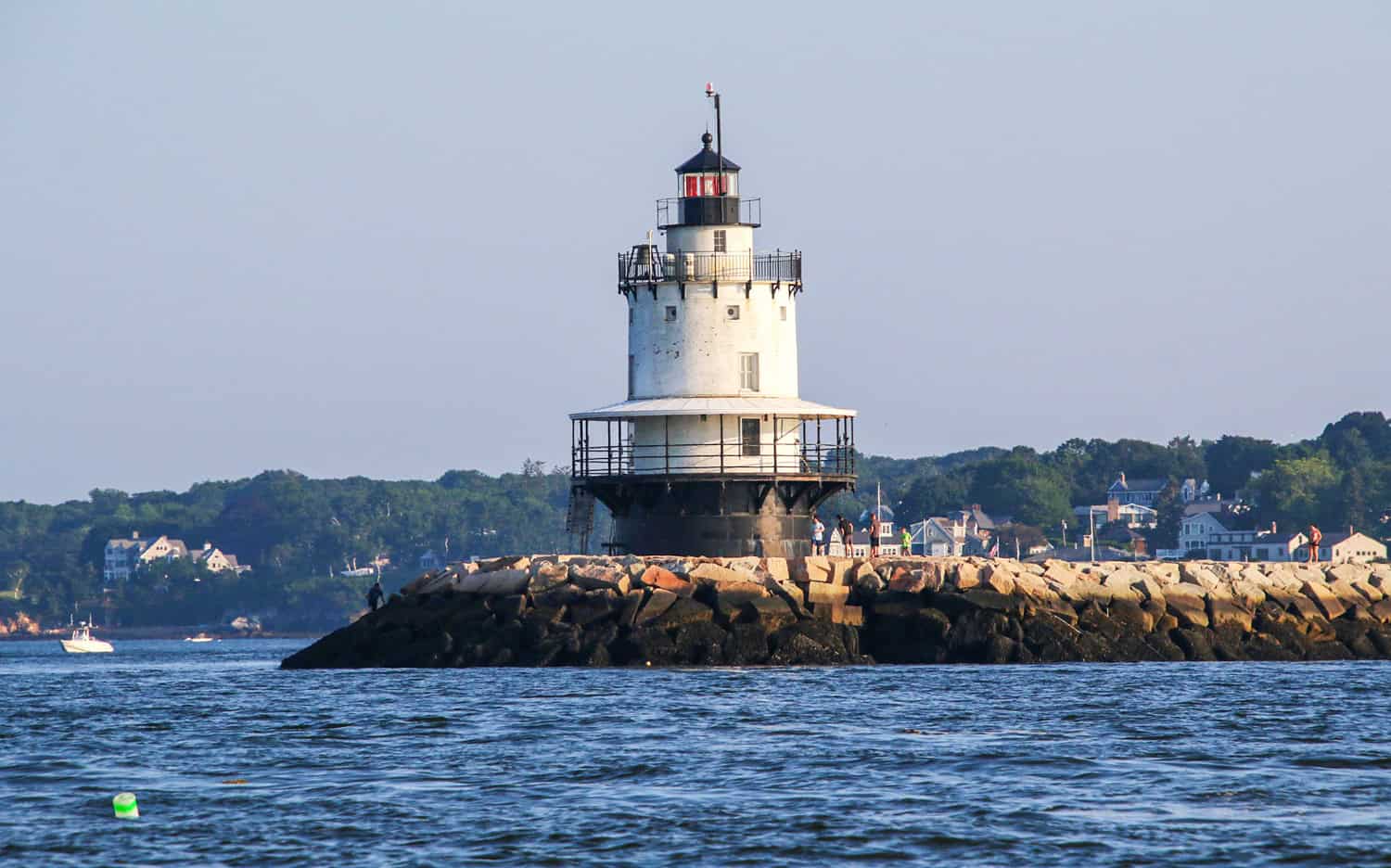
Spring Point Ledge Lighthouse is a National Historic Landmark in South Portland, just east of Bug Light. It's known for its design, which mimics the shape of a spark plug.
This lighthouse was completed in 1897 to warn sailors about the dangerous underwater obstruction known as Spring Point Ledge, which posed a significant hazard to ships entering Portland Harbor.
What makes this lighthouse particularly unique is the 950-foot granite breakwater added in 1951, connecting it to Fort Preble on the mainland. More than 50,000 tons of granite were used.
The breakwater allows visitors to walk right up to the lighthouse, a rarity among offshore lights.
4. Cape Elizabeth Light East Tower
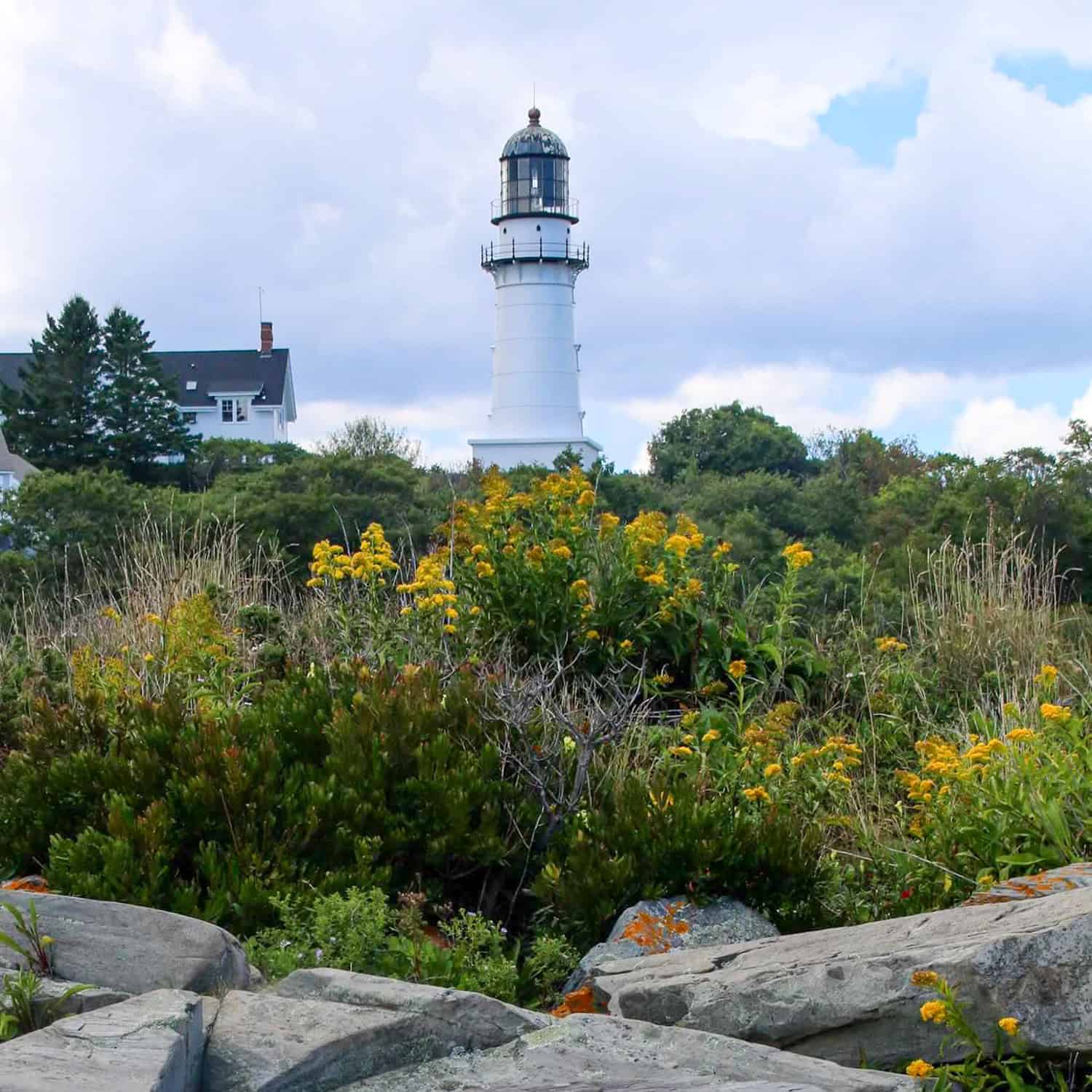
Cape Elizabeth Light East Tower, also known simply as Cape Elizabeth Light, is one of two twin lighthouses in Cape Elizabeth, Maine.
The 67-foot-tall East Tower was constructed in 1874 to replace earlier structures. While its twin, the West Tower, was deactivated in 1924, the East Tower continues to shine light over Casco Bay.
The Cape Elizabeth lights were critical for guiding seafarers through the treacherous waters around Portland, Maine's largest city and busiest port.

The East Tower's light could be seen for up to 15 nautical miles, a vital navigational aid for commercial and recreational vessels.
Over the years, it has undergone various upgrades, including installing a more modern optic, but its historical significance as a guardian of Maine's rocky coast remains unchanged.
Today, the East Tower is a popular spot for photography and offers pretty views of the Atlantic Ocean.
The Lobster Shack at Two Lights features a large outdoor patio with picnic tables to enjoy the view when the weather is agreeable and a cozy space inside when it's not.
During our visit, Kel and I indulged in a warm lobster roll and a slice of homemade rhubarb pie.
5. Pemaquid Point Lighthouse
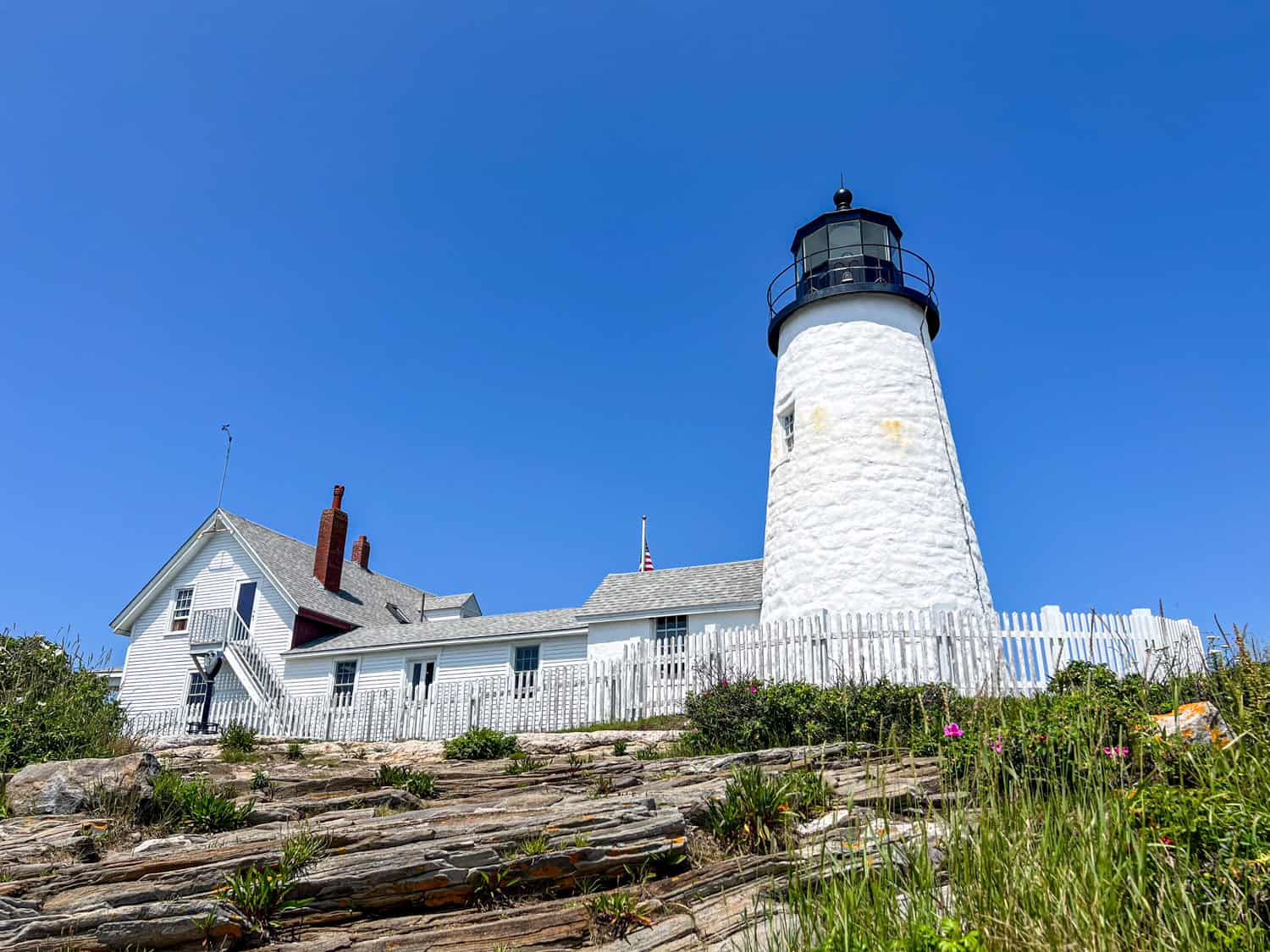
Pemaquid Point Lighthouse symbolizes Maine's maritime history. It's located in the MidCoast town of Bristol, halfway between Portland and Bar Harbor.
Commissioned by John Quincy Adams, this lighthouse was created in 1827 and has been guiding ships safely along the rocky coast for nearly 200 years.
Its light can be seen up to 14 nautical miles away, making it a critical navigational aid for mariners traversing the Gulf of Maine.
The lighthouse sits atop dramatic, striated rock formations shaped by millennia of ocean waves, making it a popular spot for photographers and nature lovers.
Pemaquid Point is one of the few lighthouses in Maine that allow visitors to climb the steep spiral stairs to the top.

While it can get hot and stuffy up there in the summer, and there's little room to move due to the original and delicate Fresnel lens, it's an experience not to be missed.
Pemaquid Point's cultural significance resulted in its image being chosen for the tail side of Maine's state quarter in 2003. It's the first lighthouse to grace a form of currency in the United States.
The ground floor of the Keeper's House has been converted into the Fisherman's Museum, offering visitors a glimpse into the life of a 19th-century lighthouse keeper. And the second-story apartment is available for weekly rentals.
With its blend of natural beauty and historical importance, Pemaquid Point Lighthouse is a must-see landmark for anyone visiting the Maine coast.
Plan to visit during breakfast or lunchtime and take advantage of the sensational views from the adjacent SeaGull Restaurant.
6. Egg Rock Lighthouse

Egg Rock Lighthouse, perched on a small island in Frenchman Bay near Bar Harbor, Maine, has a history that's as intriguing as its unique name.
Built in 1875, the lighthouse was designed to guide sailors safely through the bay and into the bustling ports of Bar Harbor and Winter Harbor.
Its location was significant for guiding fishermen and the increasing number of pleasure boats that frequented the area during Bar Harbor's heyday as a Gilded Age resort town.
The lighthouse is a 40-foot tall, cylindrical brick tower, accompanied by a keeper's house and other outbuildings. It was automated by the U.S. Coast Guard in 1976.
Today, the lighthouse is best viewed from a boat or the scenic vistas along Acadia National Park's Park Loop Road on Mount Desert Island.
I saw it from both land and sea and recommend the latter. I got a close-up view of Egg Rock during a Lulu Lobster Boat tour, and we saw tons of harbor and gray seals on the rocks and in the water.
7. Bass Harbor Head Light Station
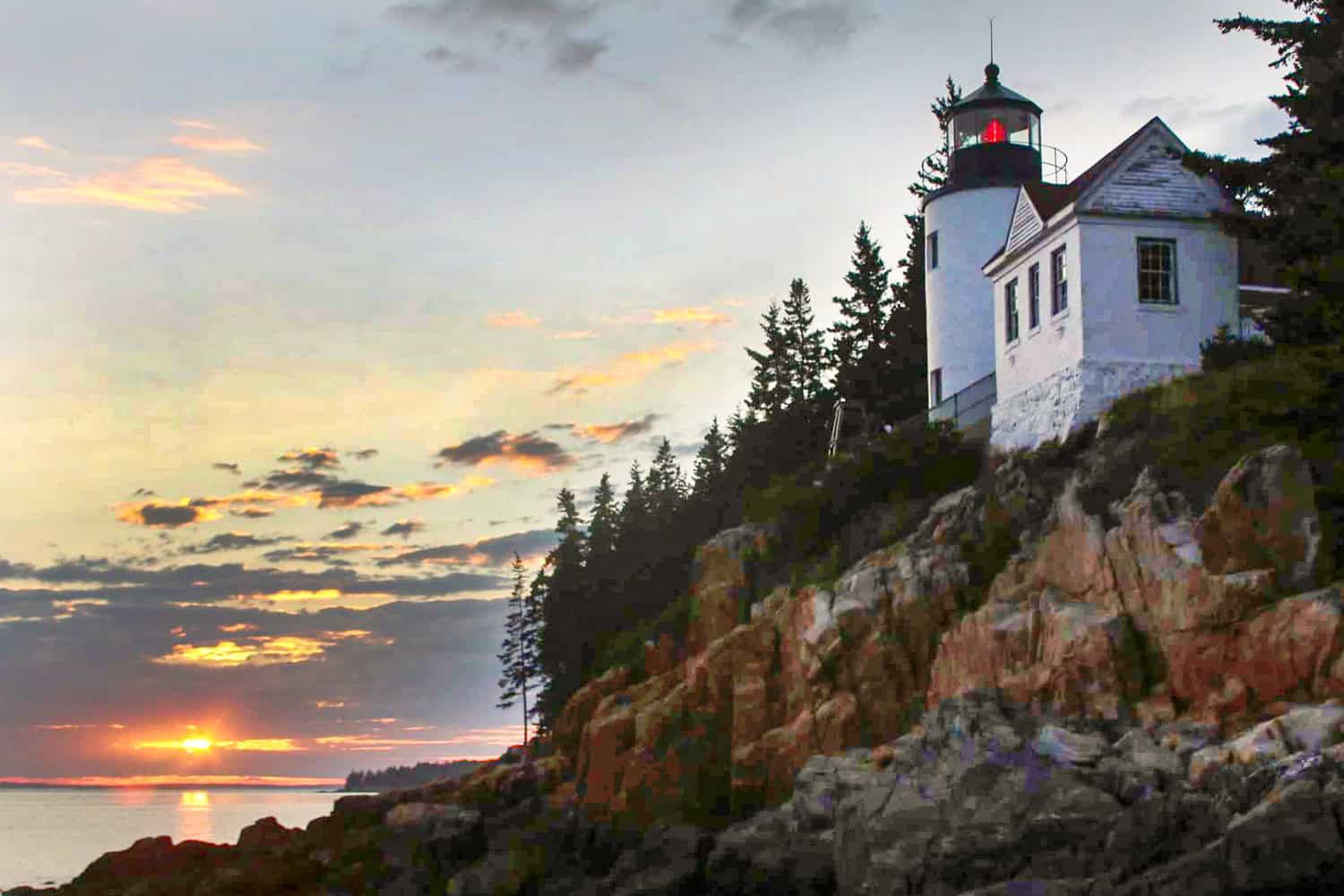
Bass Harbor Head Light is a quintessential Maine lighthouse in Acadia National Park.
Completed in 1858, this lighthouse has been a necessary navigational aid, guiding ships through the entrance of Bass Harbor and Blue Hill Bay.
Its strategic location at the southwest tip of Mount Desert Island made it particularly meaningful for the fishing and shipbuilding industries that have been the region's lifeblood.
The lighthouse features a 33-foot tall brick tower with a distinctive fourth-order Fresnel lens, which can cast its light up to 13 nautical miles. The keeper's house is a classic example of New England architecture.
Drawing 180,000 visitors annually, Bass Harbor Head Light is one of the most photographed lighthouses in the U.S.
8. Rockland Breakwater Lighthouse
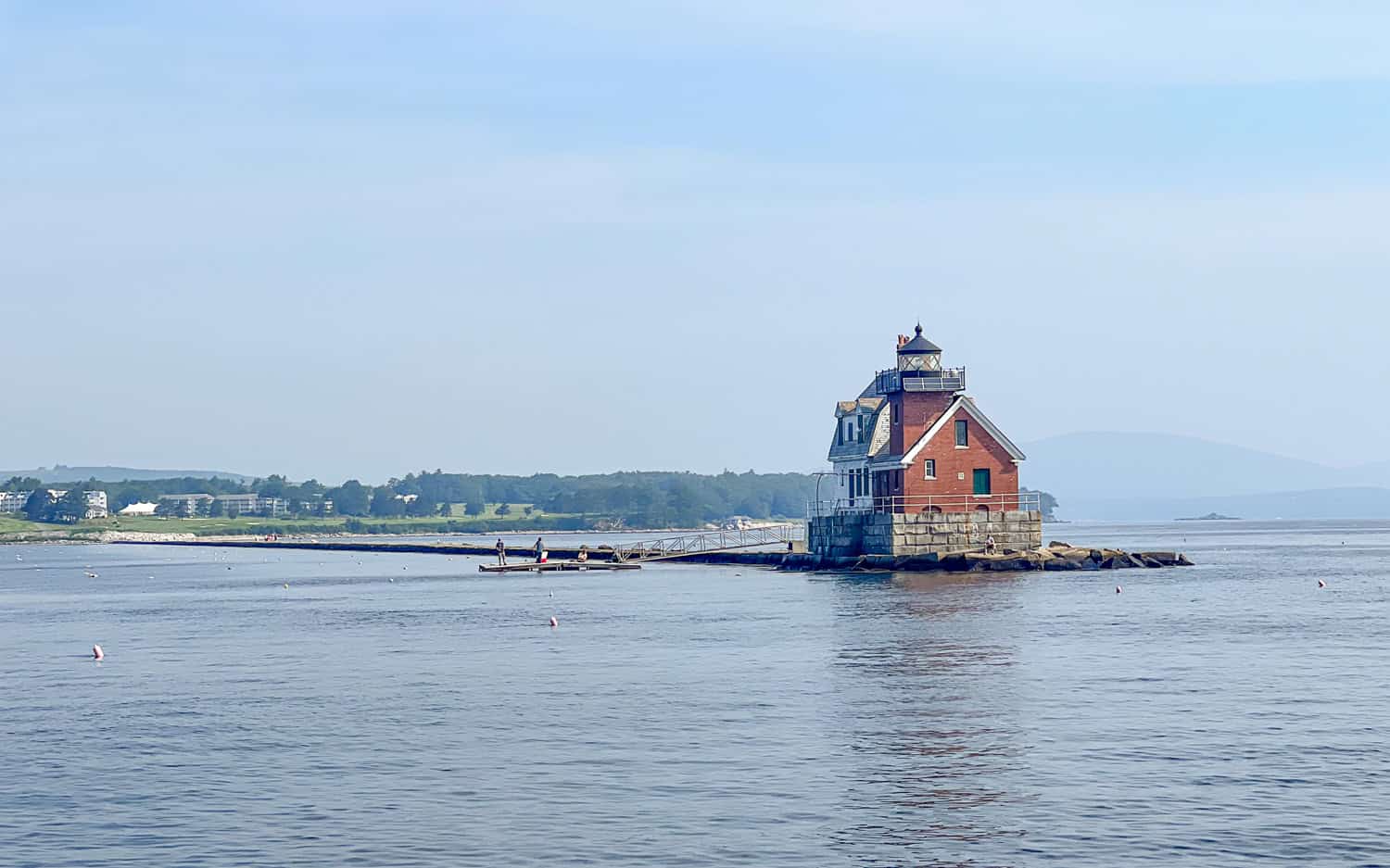
The Rockland Breakwater Lighthouse has a unique claim to fame: it sits at the end of a nearly mile-long breakwater in Rockland Harbor, Maine.
The breakwater was built between 1881 and 1899 to protect the harbor from rough seas, making it a safer haven for the booming lime and fishing industries.
The lighthouse was completed in 1902 and has guided vessels safely into the harbor ever since. The 25-foot tall lighthouse is relatively modest in size but mighty in its role.
It serves as a critical navigational aid, especially given the busy nature of Rockland Harbor, which continues to be a hub for commercial fishing, shipping, and recreational boating.
Visitors today can take a scenic walk along the breakwater to reach the lighthouse, offering a unique experience that combines maritime history with ocean views.
For safety's sake, time your walk with low tide and skip it if there's low visibility (fog), rain, or ice.
Due to thick fog, I missed an opportunity to walk out to Rockland Breakwater Lighthouse. But I later saw it from my windjammer cruise aboard Schooner J & E Riggin.
9. Owl's Head Lighthouse
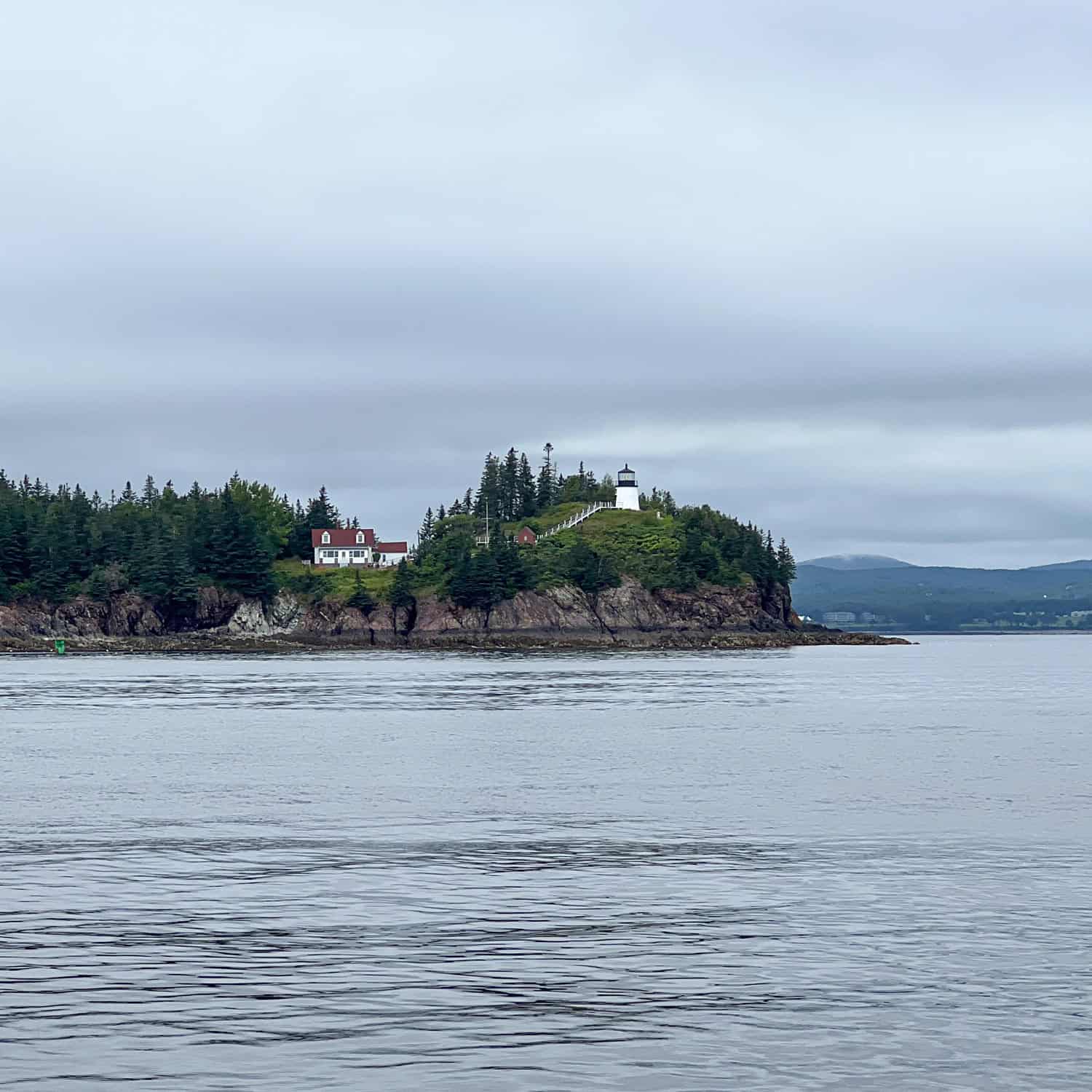
Perched on a bluff overlooking Penobscot Bay, Owls Head Lighthouse has been a guiding light for navigators since 1825.
Its strategic location at the entrance to Rockland Harbor made it essential for the area's bustling lime, timber, and fishing industries.
The 30-foot tall white brick tower features a fourth-order Fresnel lens that casts a light visible for up to 16 nautical miles. It was automated in 1989.
Owls Head Lighthouse is accessible on foot through the Owls Head State Park, about a six-mile, 15-minute drive east of downtown Rockland. I saw it from the water during my windjammer cruise.
10. Nubble Lighthouse

Officially known as Cape Neddick Light, Nubble Light is one of Maine's most iconic lighthouses.
Commissioned by President Rutherford B. Hayes in 1874 and completed in 1879, Nubble Light is perched on a rocky island off the coast of York in southern Maine.
The 41-foot light tower is a classic New England-style lighthouse with a charming keeper's house.
Nubble Light gained widespread fame through its annual “Lighting of the Nubble” Christmas event, drawing crowds from near and far.
11. West Quoddy Head Lighthouse
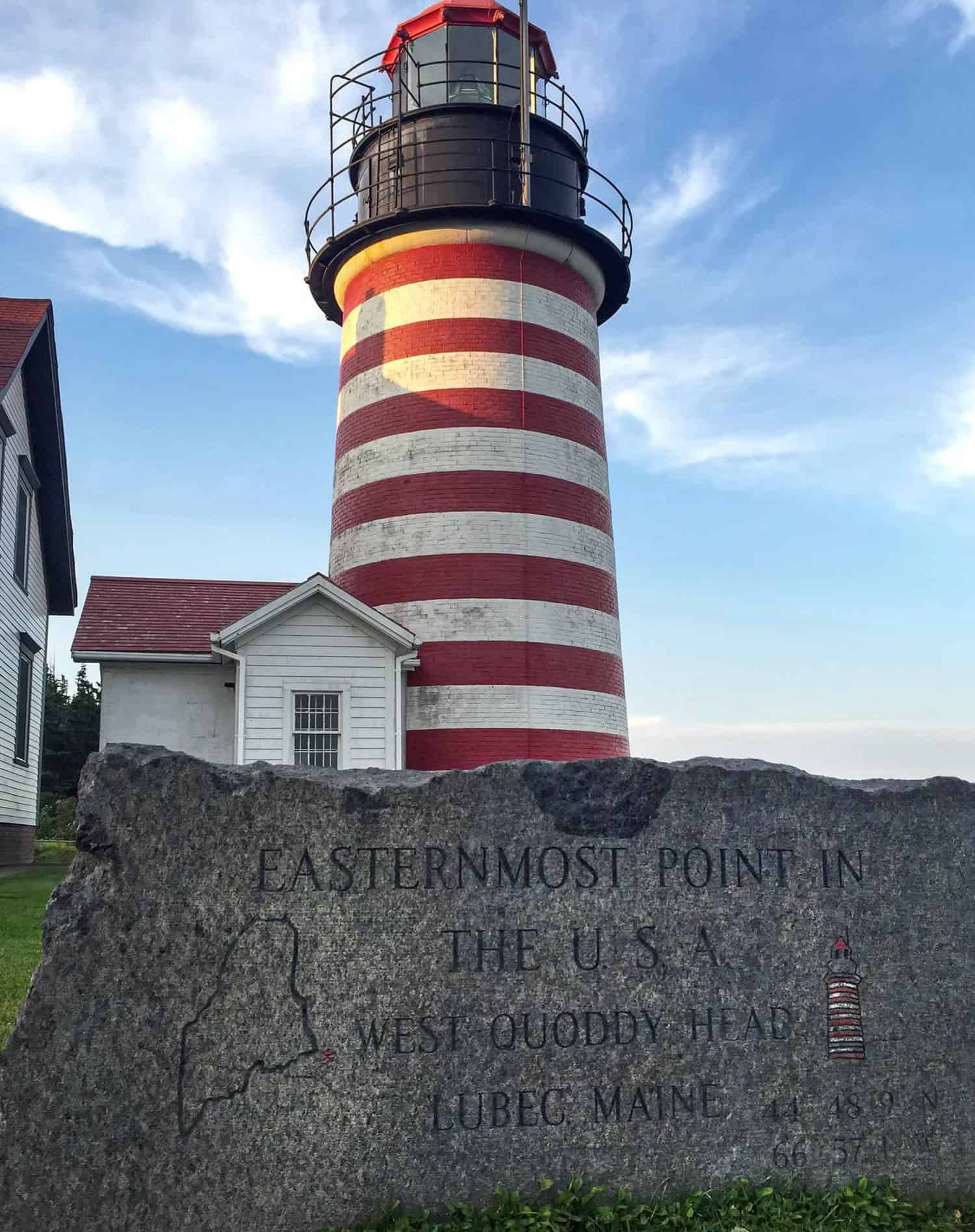
Situated in Lubec, Maine, near the Canadian border, West Quoddy Head Lighthouse is the easternmost point in the United States, making it the first place in the country to see the sunrise.
Completed in 1858 to replace an earlier structure, the lighthouse is instantly recognizable for its red-and-white candy-striped tower.
West Quoddy Head has been vital for guiding mariners through the Quoddy Narrows, a strait between Canada and the U.S.
The lighthouse's third-order Fresnel lens can project its light up to 18 nautical miles.
It serves as a necessary navigational aid for both commercial and recreational vessels navigating the foggy, treacherous waters of the Bay of Fundy.
Today, the lighthouse is a popular tourist attraction with a visitor center and museum.
12. Doubling Point Lighthouse
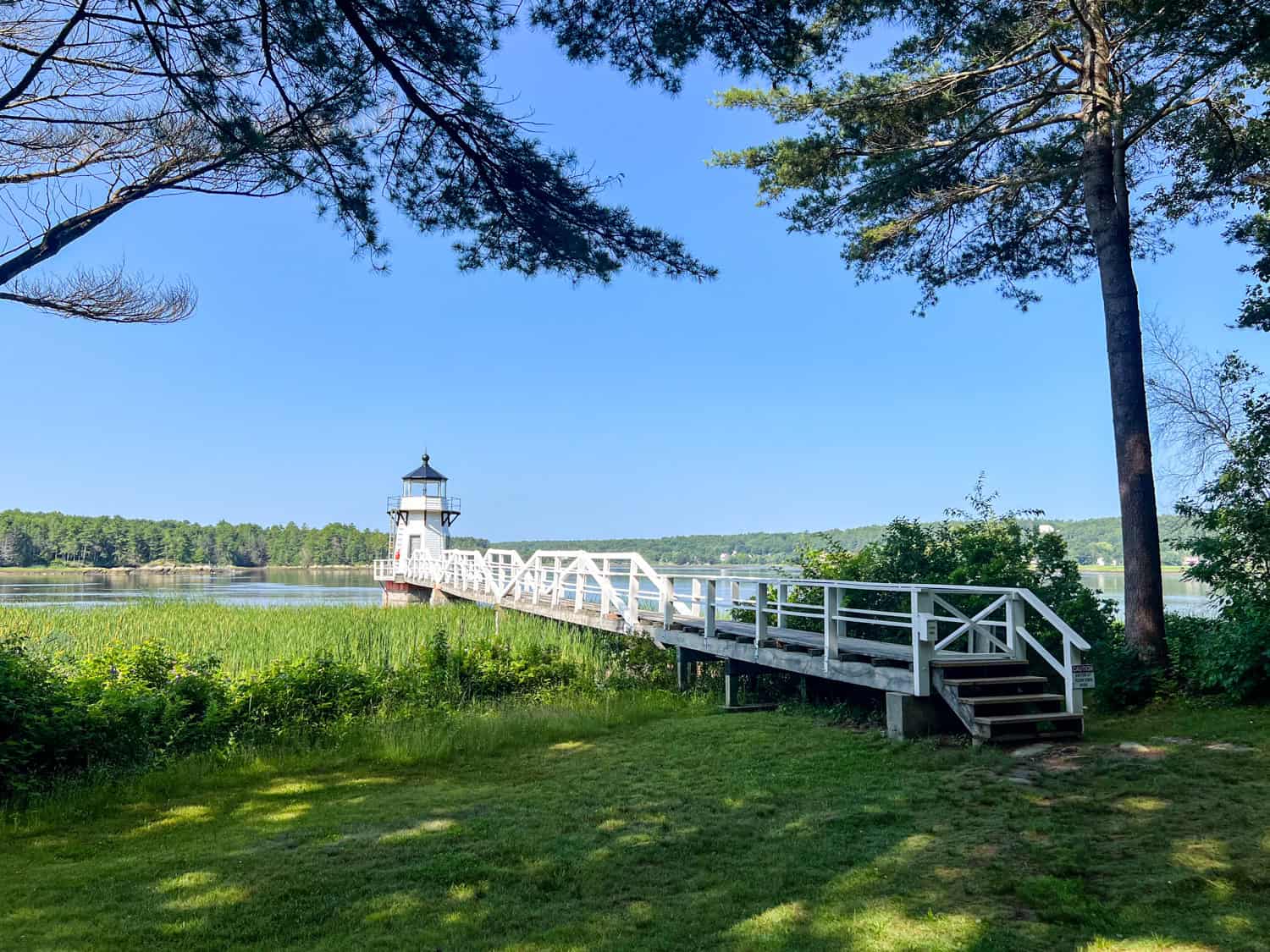
Doubling Point Lighthouse, located on the Kennebec River in Arrowsic, Maine, has been a vital aid since its construction in 1899.
The picturesque lighthouse guides ships through a challenging bend in the river, which has been a crucial waterway for Maine's shipbuilding and lumber industries.
The 24-foot tall wooden tower is unique for its architectural details, including a Victorian keeper's house (now a private residence).
Related: Hiking to Makapu'u Lighthouse on Oahu
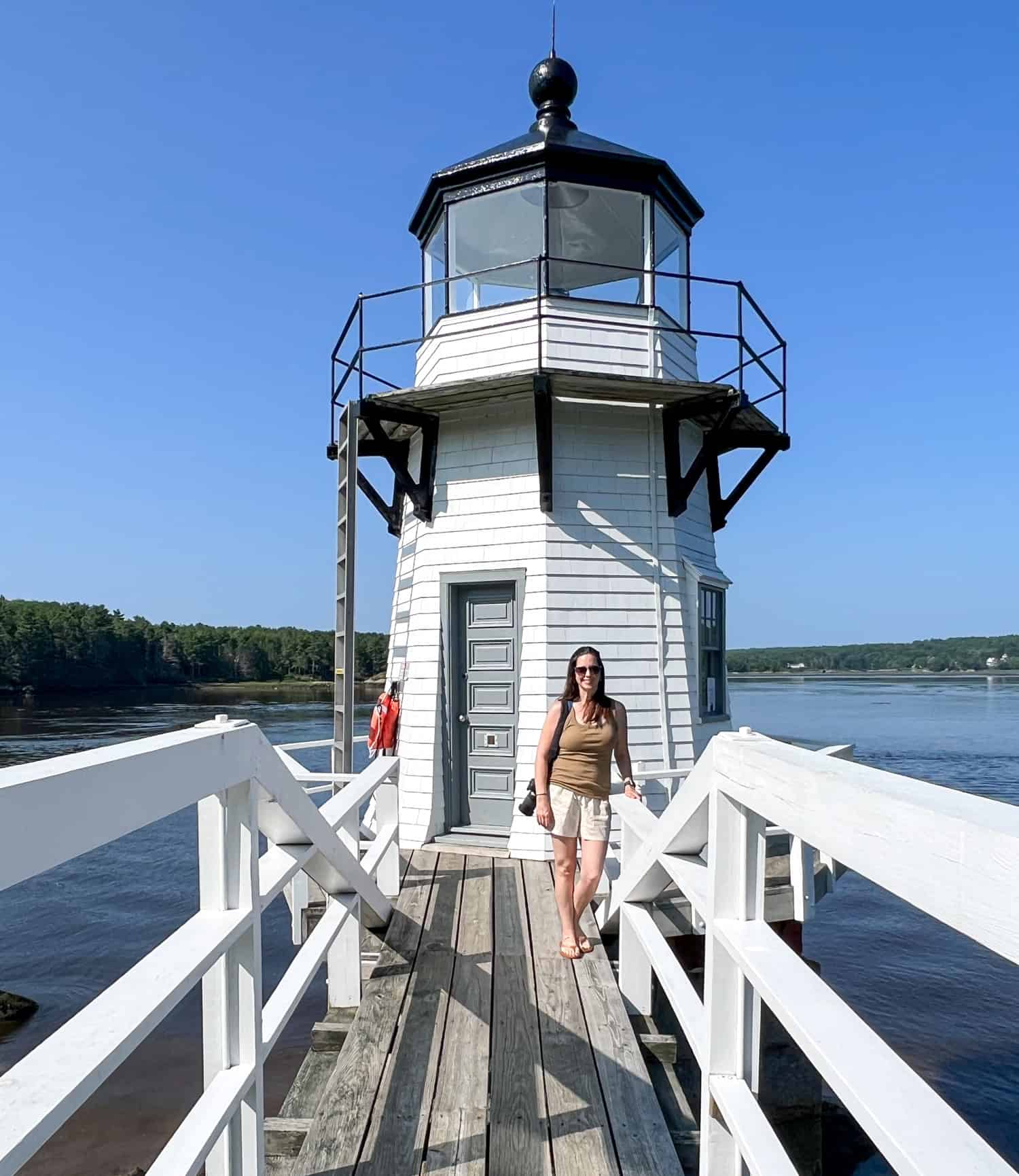
Its website states, “Entry into the lighthouse tower occurs once annually during the American Lighthouse Foundation and Coast Guard-sponsored Maine Open Lighthouse Day in September.”
If you plan to visit Doubling Point Lighthouse, I recommend taking an additional 60-90 minutes to see the Maine Maritime Museum on the other side of the river in Bath.
13. Marshall Point Lighthouse
Marshall Point Lighthouse, located in Port Clyde, Maine, gained some Hollywood fame when it appeared in the movie “Forrest Gump.”
Built in 1832 and rebuilt in 1857, this lighthouse has long guided fishermen and boaters in navigating the tricky waters around the St. George Peninsula.
Its distinctive wooden walkway and white clapboard 1880's Keeper's House add to its allure. The house has a small museum and gift shop.
14. Burnt Island Light House
Burnt Island Light, located in Boothbay Harbor, Maine, has been a beacon for mariners since 1821.
It's one of the oldest surviving lighthouses in Maine and has been crucial for guiding fishing boats, cargo ships, and recreational sailboats through the busy waters of Boothbay.
The 30-foot tower is accompanied by a beautifully restored keeper's house, now a living history museum.
Accessible by boat, the island offers a unique educational experience, transporting visitors back to the 1950s to learn about the life of a lighthouse keeper.
15. Goat Island Light
Goat Island Light in Cape Porpoise Harbor has been a guiding light for mariners in Maine since 1833.
The lighthouse marks the entrance to the harbor and has been instrumental in supporting the local fishing community.
The 25-foot tall tower underwent several renovations, the most significant being in 1859 when it was fitted with a fourth-order Fresnel lens.
Goat Island Light is unique for its keeper's house, which is still intact and serves as a summer residence for the lighthouse caretaker. The lighthouse can be seen from the Cape Porpoise Pier.
Conclusion
Whether you're a history buff, a photography enthusiast, or someone who loves the sea, Maine's beautiful lighthouses are a treasure trove of stories, vistas, and cultural significance.
Each historic lighthouse offers a unique window into Maine's maritime past and present, from the iconic Portland Head Light to the lovely Goat Island Light.
So, the next time you find yourself in the Pine Tree State, don't miss the chance to explore them.
With their rich histories and breathtaking settings, they're not just waypoints for sailors but landmarks that capture the essence of Maine.
Grab your camera, pack a picnic, and embark on an unforgettable lighthouse adventure!
Dave is the Founder and Editor in Chief of Go Backpacking and Feastio. He's been to 66 countries and lived in Colombia and Peru. Read the full story of how he became a travel blogger.
Planning a trip? Go Backpacking recommends:
- G Adventures for small group tours.
- Hostelworld for booking hostels.
